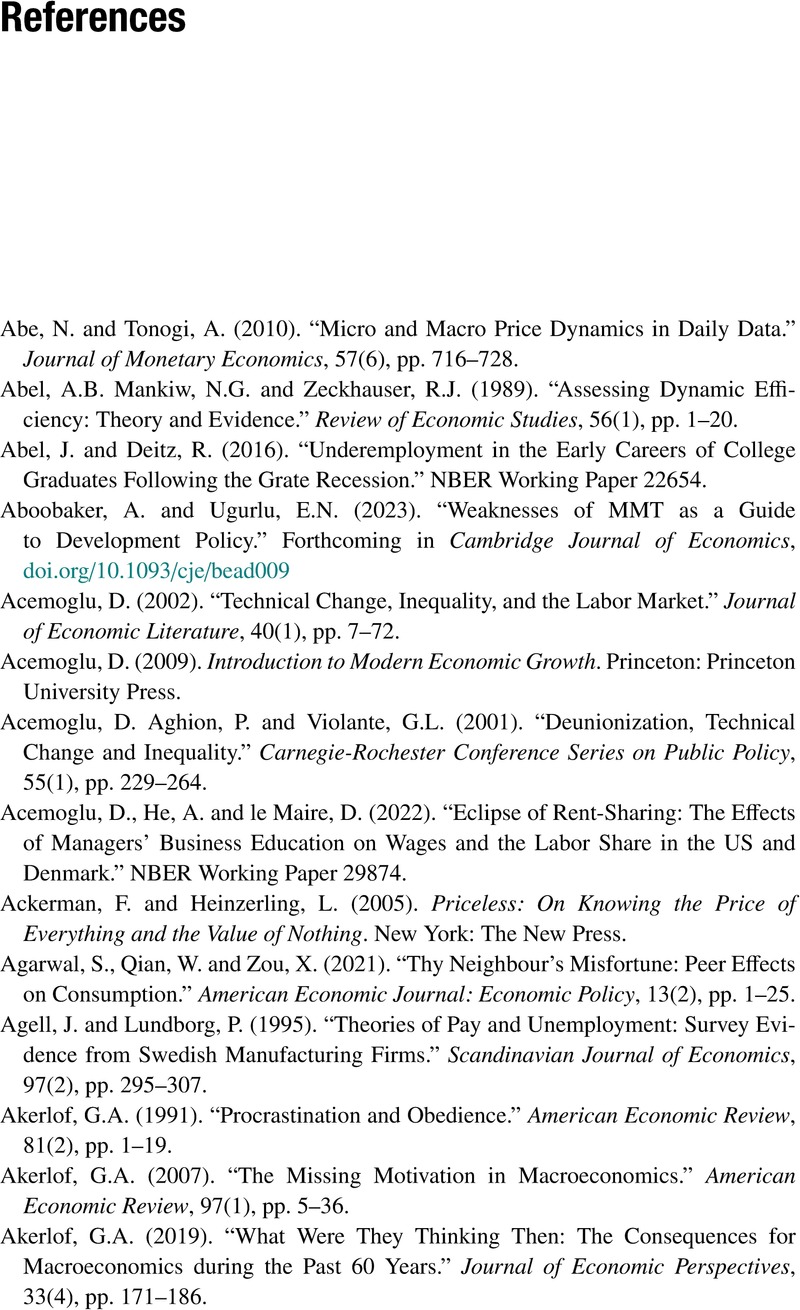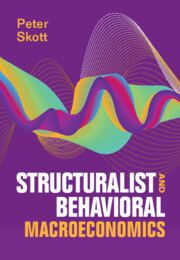Book contents
- Frontmatter
- Contents
- Figures
- Preface and Acknowledgments
- 1 Introduction: The State of Macroeconomics
- 2 The Lucas Critique and Representative Agents
- 3 Household Consumption and Saving
- 4 Saving in a Corporate Economy
- 5 Phillips Curves and the Natural Rate of Unemployment
- 6 Fairness, Money Illusion, and Path Dependency
- 7 Earnings Inequality, Power Bias, and Mismatch
- 8 Macroeconomic Adjustment and Keynes’s Instability Argument
- 9 Growth and Cycles
- 10 Endogenous Growth Cycles with or without Price Flexibility
- 11 Secular Stagnation and Functional Finance
- 12 Concluding Comments: Evidence-Based Macroeconomics and Economic Theory
- References
- Author Index
- Subject Index
- References
References
Published online by Cambridge University Press: 10 November 2023
- Frontmatter
- Contents
- Figures
- Preface and Acknowledgments
- 1 Introduction: The State of Macroeconomics
- 2 The Lucas Critique and Representative Agents
- 3 Household Consumption and Saving
- 4 Saving in a Corporate Economy
- 5 Phillips Curves and the Natural Rate of Unemployment
- 6 Fairness, Money Illusion, and Path Dependency
- 7 Earnings Inequality, Power Bias, and Mismatch
- 8 Macroeconomic Adjustment and Keynes’s Instability Argument
- 9 Growth and Cycles
- 10 Endogenous Growth Cycles with or without Price Flexibility
- 11 Secular Stagnation and Functional Finance
- 12 Concluding Comments: Evidence-Based Macroeconomics and Economic Theory
- References
- Author Index
- Subject Index
- References
Summary

- Type
- Chapter
- Information
- Structuralist and Behavioral Macroeconomics , pp. 342 - 374Publisher: Cambridge University PressPrint publication year: 2023



